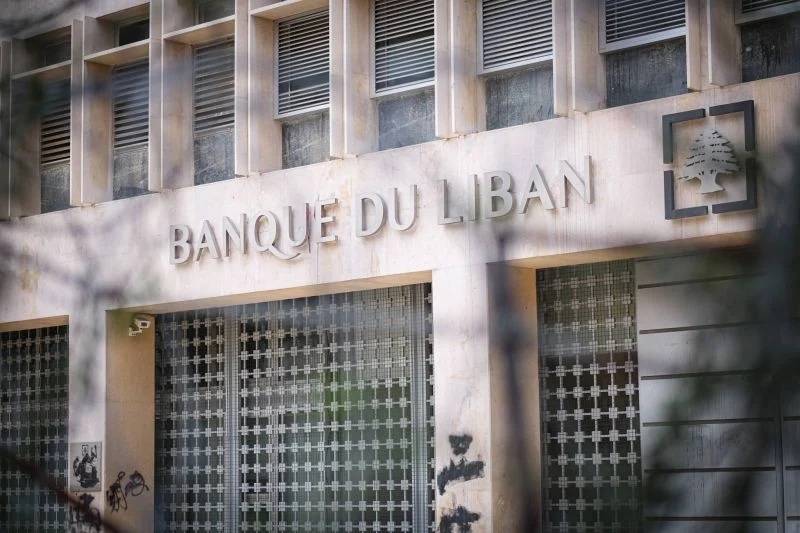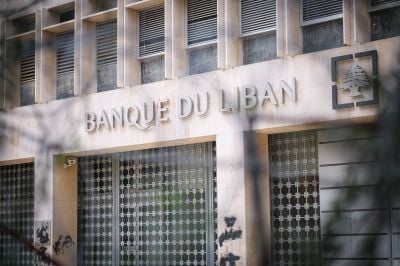
If it appears that exchanges via OMT have impacted the daily volume traded on Sayrafa, the extent of those transactions recovered by Banque du Liban is unclear. (Credit: João Sousa/L'Orient Today)
“The real dollar/lira exchange rate is what Banque du Liban announces daily,” Lebanon’s central bank Gov. Riad Salameh said two weeks ago — a jab at the parallel exchange market which he considers to be illegal and whose rate is significantly higher than the one published on a daily basis by the Sayrafa platform that went online over a year ago.
In reality, however, no one can buy hard currencies at the Sayrafa rate.
The platform was set up in a bid to render more transparent a market that has been in limbo since the financial and economic crisis broke out more than two years ago. But today, it seems only to be used to calculate and disseminate an average of the various daily exchange rates used by banks, some money changers and OMT, the money transfer company representing Western Union in Lebanon.
To make matters worse, given the difference between the Sayrafa rate and that of the parallel market, the gap between the bank rate, the money changers’ rate and the OMT rate must be wide enough to yield the average calculated by the BDL, which raises several questions about the platform’s usefulness.
When contacted, BDL did not wish to comment on the subject. L’Orient-Le Jour also tried to reach out to parties who interact directly or indirectly with Sayrafa, including bankers, money changers, money transfer companies or even importers, all of whom said they did not know precisely how the platform worked.
In short, for them the Sayrafa platform is a “mystery” and a “black box.” Others have gone so far as to say that the platform’s rates are fictitious.
Buying hard currencies coming from remittances
In a bid to understand how the Sayrafa platform works, one ought to consider a concrete example.
On Nov. 30, the Sayrafa rate stood at LL20,600 to the dollar for a trade volume of $3.7 million (between buying and selling).
On that day, however, the lira was fluctuating between LL24,500 and LL24,750 to the dollar at money changers and in the various offices of OMT — one of the main money transfer services in the country and the only exchanger to directly share its calculation of the lira’s rate online.
Even if the size of the transactions at money changers and money transfer services are unknown, there is only one scenario that can explain the discrepancy between the rates: Foreign exchange transactions by banks are carried out at a much lower rate.
In fact, if we consider that commercial banks exchange the same dollar volume daily as money changers and OMT offices, we get a banks’ lira rate fluctuating between LL16,450 and LL16,700 to the dollar for that same day. This rate would therefore be highly dependent on the total value traded by banks relative to the total Sayrafa dollar volume.
This scenario, however, is highly implausible given that banks suffer from shortages in foreign currency liquidity.
According to several bankers who spoke to L’Orient-Le Jour, few establishments agree to sell currencies at a rate lower than that of the parallel market rate because they “simply need hard currencies,” and they “have no interest in selling hard currencies at such a low rate to their customers, whereas they can legally sell them on the parallel market at a much higher rate.”
So, by elimination, the only remaining obvious explanation is that the bulk of foreign exchange transactions carried out by banks at a lower rate than the Sayrafa and the parallel market’s rate occur when they buy dollars.
The pertinent question is: who would agree to sell their cash in hard currencies at a less advantageous rate?
“Some banks received salaries and foreign currency transfers from international NGOs. These amounts are then paid out in Lebanese lira at a rate up to 20 percent lower than that of the parallel market,” another banker told L’Orient-Le Jour on condition of anonymity.
“This is a choice these NGOs are forced to make, as they need an official receipt for accounting purposes,” the source added.
This explanation alone, however, is not enough to clarify how BDL calculates its average daily rate (for example, a 20 percent discount on a rate of almost LL25,000 to the dollar brings it back to a rate close to the LL20,000 mark). The lira is presently trading at above LL27,000 to the dollar on the parallel market.
What’s more perplexing is the fact that exchange operations of hard currencies as per BDL Circular no. 151 at the rate of LL3,900 to the dollar, or LL12,000 as per Circular no. 158, are not taken into account.
Sayrafa’s different versions
Confusion reigns over the platform that was launched in an attempt to restore confidence in the financial system and to lower the lira-to-dollar rate in a market dominated by foreign exchange agents, whether legal or illegal, and the various sites and applications that have emerged to track the parallel market exchange rate.
In mid-June 2020, BDL launched its first version of the Sayrafa platform, intended for accredited money changers, with the aim of lowering the exchange rate by injecting dollars into the market.
At the time, BDL forced these exchange offices to adopt the LL3,900 rate in order “to meet the citizens’ needs in dollars,” an option that was ultimately available for food and medical equipment importers, employers of foreign domestic workers and parents of students living abroad.
A month earlier, the Lebanese authorities had launched a campaign against money changers, after which several of them, as well as a BDL executive and a banker, were held in custody and forced to appear before the financial prosecutor’s office.
Sayrafa was launched with utter disregard to the situation. While the platform’s rate was maintained at LL3,900 to the dollar, the lira was trading at a rate of LL10,000 per greenback on the parallel market, before dropping to between LL7,000 and LL8,000 to the dollar in the months that followed.
It was only on May 10 that the second version of the platform was launched via BDL main Circular no. 157, which included for the first time banks among the authorized users to carry out exchange operations, in addition to money changers.
BDL then forced clients to disclose the details of and reasons for their transaction, as well as their civil and legal status. Meanwhile, banks were required to indicate on a twice-daily basis the size of the transactions carried out during the day in lira and hard currency.
Circulars no. 157 and 583 also stipulated that banks and money changers who wished to join the platform could exchange cash lira for dollars — or vice versa — at “a real-time rate determined by supply and demand.”
Meanwhile, the Sayrafa rate was then set at LL12,000 per greenback, with an authorized profit margin of 1 percent, while the rate on the parallel market was around LL12,800 to the dollar.
BDL was also regularly publishing the exchange volumes and the average rates of these transactions, which were at first shared on a weekly basis and then on a daily basis starting July 26.
On Aug. 5, BDL decided to allow its customers affected by banking restrictions to withdraw part of their deposits in dollars.
This decision was made as per Circular no. 158 on June 8, which also allowed depositors to withdraw $400 in cash, in addition to this sum’s equivalent in lira on a monthly basis, for a certain period of time.
But the lira conversion rate, which was supposed to be the same as Sayrafa’s, was arbitrarily reduced to LL12,000 to the dollar, which meant that the platform was irrelevant.
The result was that depositors who saw in Circular no. 158 a means of reducing the haircut they took when withdrawing their blocked dollars in lira had, once again, to content themselves with the LL12,000 rate while the Sayrafa and parallel market rates continued to climb.
The OMT effect
More recently, in October, BDL decided to allow money transfer companies to conduct foreign exchange transactions, if they wished to do so.
According to Salameh in a recent interview with Reuters, this decision would allow BDL to buy from these companies a portion of the dollars they received via wire transfer in order to boost the central bank’s reserves. He said that this would allow BDL to secure an amount ranging from $300 million to $500 million of the needed $2.5 billion per year to maintain some subsidies, which is equivalent to $1.1 million to $1.9 million per working day.
In mid-October, OMT decided to start exchanging money — a decision the effects of which were quickly visible. Before Oct. 12, the date the OMT exchange operation was officially integrated with Sayrafa, an average of $1.3 million were registered per day by the money wire firm, according to available data. But this sum was not fully acquired by BDL.
That average has since more than tripled to $4.47 million per day.
The rate at which people directly converted all or part of their funds transferred from abroad into cash lira was very close to that of the parallel market, and the same rate at which BDL bought the dollars exchanged at OMT, according to L’Orient-Le Jour’s information.
But it seems that exchanges via OMT impacted the daily volume traded on Sayrafa, while the amount recovered by the central bank remains unclear.
L’Orient-Le Jour contacted OMT, but the company had yet to reply at the time of publication.
In conclusion, and in light of the great ambiguity surrounding the platform that was launched for the very purpose of clearing up confusion surrounding foreign exchange and lowering the parallel market exchange rate, it is legitimate to wonder what the use of Sayrafa is when its rates are not applied by anyone, not even BDL.
This article was originally published in French in L'Orient-Le Jour. Translation by Sahar Ghoussoub.
